

Max Davies
2025 BYD Shark 6 review
23 Days Ago
The 2023 Isuzu D-Max brings some minor upgrades to a segment staple, which we test here in LS-U+ specification level.



Quickly see how this car stacks up against its competition. Select any benchmark to see more details.
Where expert car reviews meet expert car buying – CarExpert gives you trusted advice, personalised service and real savings on your next new car.
Isuzu Ute has given its well-regarded D-Max a refresh for the 2023 model year – nothing radical, but perhaps enough to keep it in the headlines alongside the all-new Ford Ranger.
The MY23 update brings more D-Max SX workhorse options, further refinements to the driver-assist systems with towing at the front-of-mind, some minor cosmetic upgrades outside and in, and new features including tailgate assist with gas struts.
The version we’re driving here is the D-Max LS-U+, which sits one rung below the range-topping X-Terrain show pony and to my mind is the pick of the range.
Think of it as the variant for those who want all the mod-cons, but don’t want the overt body kit that defines the X-Terrain and in my view reduces practicality.

Close to 50,000 current-generation Isuzu D-Maxes have found their way into Australian households since the local late-2020 launch – a figure that could have been higher were it not for ongoing shortages which continue to be a factor for the MY23 model.
It’s a regular top-three player, behind only the Ford Ranger and Toyota HiLux.
“This is the most significant update to the Isuzu D-Max range since debut — with each model set to receive a bolder design aesthetic, new features, and three new models added — giving customers more choice,” reckons Isuzu Ute Australia managing director Hiroyasu Sato.
“In a market where some brands have removed features to meet delivery timeframes, we’ve listened to the feedback from customers and the media and have introduced new features to keep the Isuzu D-Max towards the top of the segment; features that appeal to the modern ute driver, and the towing and touring adventurer.”
Let’s gear up for a revisit and put this claim to the test.

Lower-level grades come in single-cab and extended-cab forms with two diesel engine options, some offering dropside trays (cab-chassis). You can view the full range price list here.
But the Isuzu D-Max LS-U+ is available solely as a 4×4 dual-cab (Crew Cab in Isuzu parlance) with the 3.0-litre diesel engine and six-speed automatic transmission. It sits between the LS-U and the X-Terrain in the price list.
As such its recommended retail price (RRP) before on-road costs is $63,500 – $2500 pricer than the RRP of an LS-U, and $4000 cheaper than the RRP of an X-Terrain.
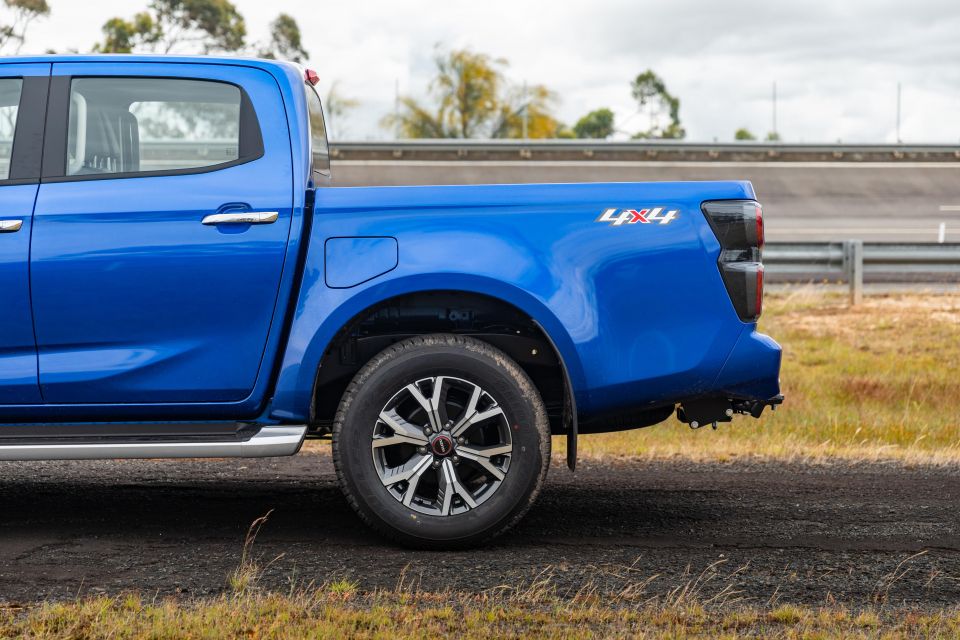
But it’s not that simple. See, Isuzu Ute offers special drive-away pricing on the X-Terrain of $64,990 on the road, whereas using the drive-away pricing calculator on Isuzu’s site shows a price of around $69,000 on the road for the LS-U (RRP plus state taxes and delivery costs).
You should not be expected to pay more for the LS-U+ than a better-specified X-Terrain, so we’d advise you to talk about this with your dealer.
At a $63,500 RRP, the D-Max LS-U+ competes against price-point competitors such as the Ford Ranger Sport Bi-Turbo and V6 ($63,690-$66,690), Toyota HiLux SR5+ ($64,430), and the Isuzu’s twin-under-the-skin Mazda BT-50 GT ($60,390).

2023 Isuzu D-Max 4×4 pricing
Prices exclude on-road costs unless specified (D/A)

Buy your new car without the stress. It's fast, simple and completely free.

Great service from Travis and team, second time I have used this business would not hesitate to recommend them to anyone
Craig C.
Purchased a Ford Ranger in Sunshine Coast, QLD
CarExpert helped Craig save $7,224 on his Ford Ranger, now let us save you on your next new car.
Get your BEST priceIt’s not as flashy as some, but the Isuzu D-Max LS-U’s cabin gets a lot of the basics right.
For instance the front seats have a particularly generous amount of shoulder, side and thigh bolstering, are heated, and in the driver’s case electric. The leather also feels of good quality, soft and plush without being easily damaged.
Ditto the steering wheel, with reach and rake adjustments, easy controls, and tasteful white stitching. It also has a button on the right spoke which, when pressed for three seconds, disengages the lane-keeping assist system that re-activates each time the vehicle is turned on.

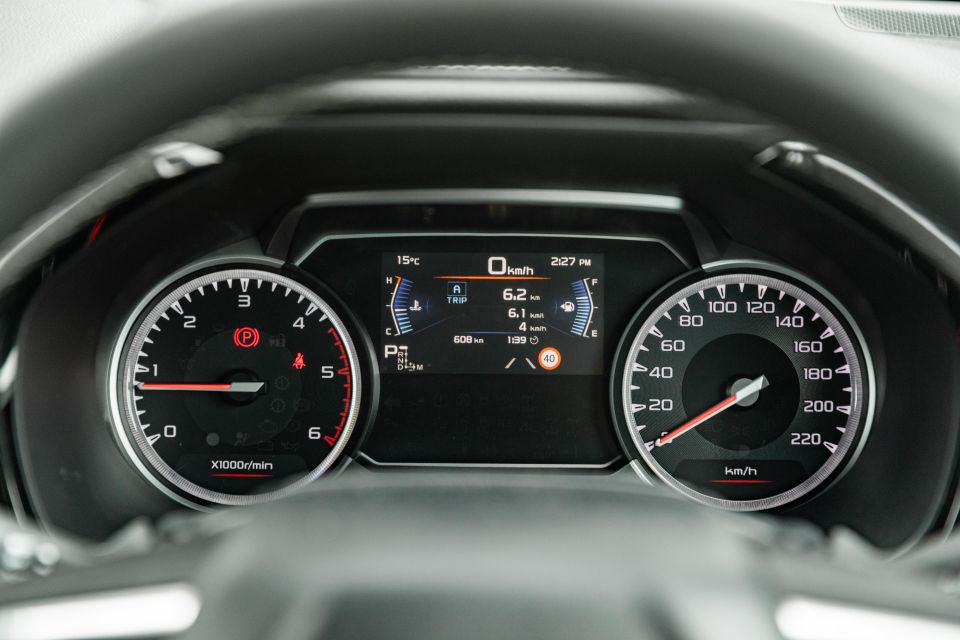
The instrument cluster comprises analogue dials with a small screen between, on which there’s a digital speedo, fuel economy readout, basic multimedia controls, 4×4 mode readout, and settings for the driver-assist features, the latter of which can only be modified when the ute is stationary. There are Trip A and B monitors.
Storage is paramount in a ute and the D-Max delivers, with 1.5-litre bottle holders in each door, sliding cup holders at each end of the dash ahead of the outboard vents, two stacked gloveboxes, a closing cubby above the touchscreen, and a transmission tunnel with a phone storage area, cup holders, and a smallish square console.
The dual-zone climate controls are run by handy rocker switches that correspond to a small digital readout, below which sits a dial to select high- and low-range 4×4. No naff touchscreen controls for A/C here…

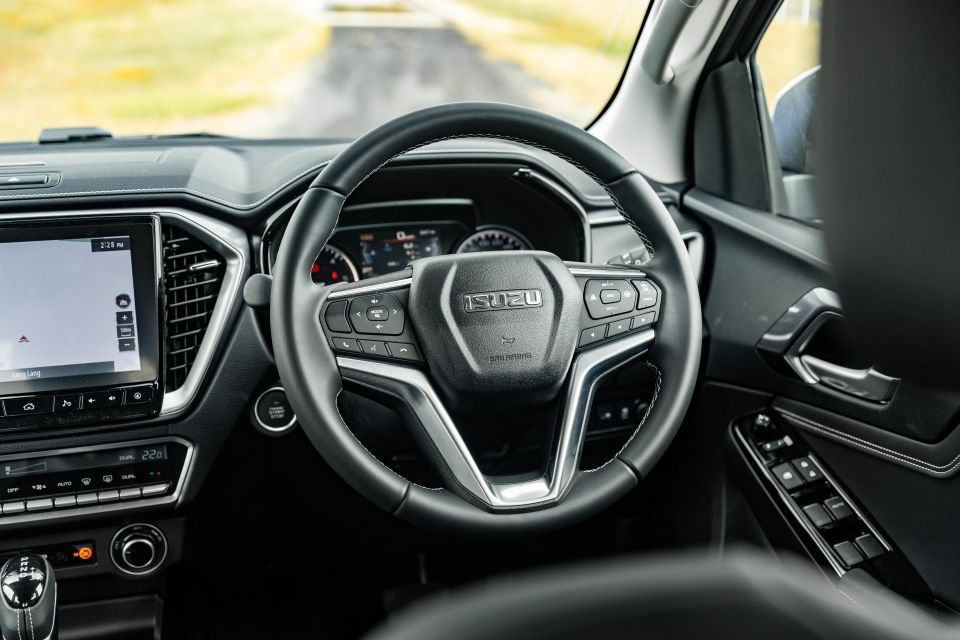
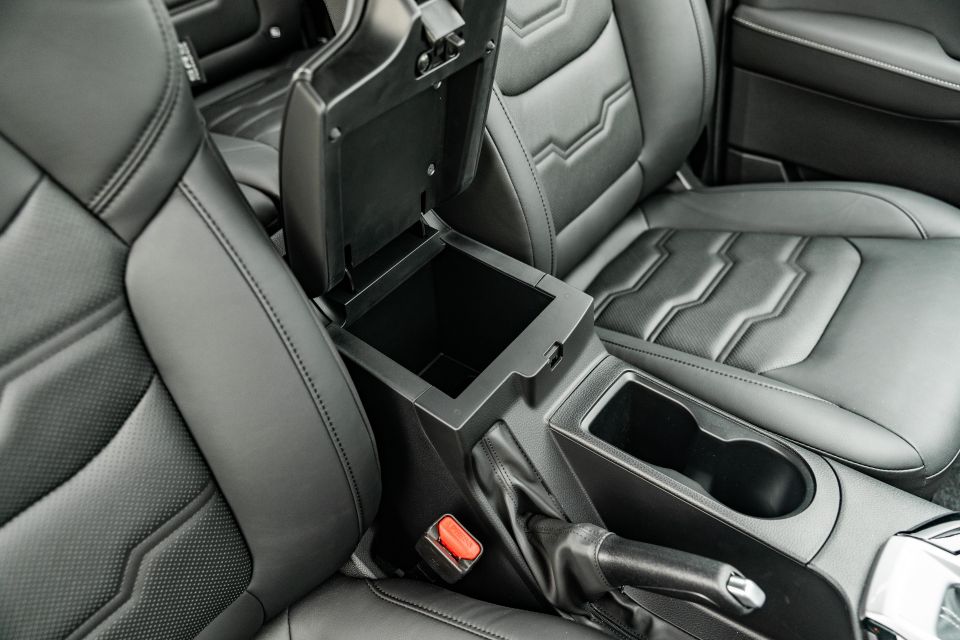
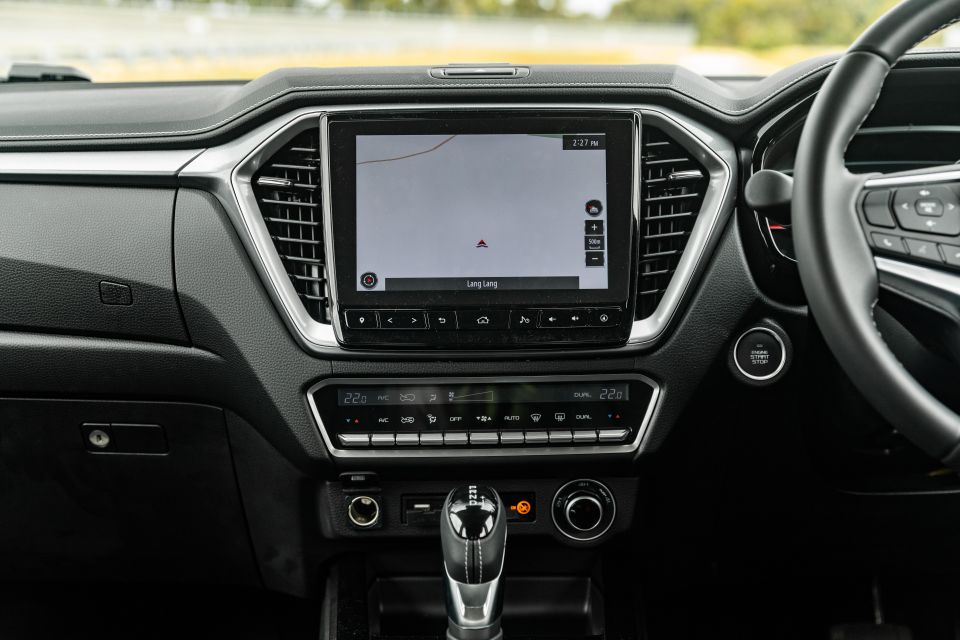
The centre touchscreen covers the basics: satellite-navigation, a decent reversing camera with a good view of the towball, a surprisingly decent sound system including roof speakers, and Apple CarPlay and Android Auto. But it feels like an afterthought rather than a fully integrated screen, since it controls no vehicle functions beyond multimedia.
Overall build quality feels pretty good actually, with a sturdy console, pretty even gaps and joins, and a few padded surfaces such as on the door armrests, console lid, and dash top.
There are a few grievances though. For instance there’s too much glossy black trim surrounding the gear shifter and touchscreen surround, which acts as a magnet for scratches, dust, and sun glare. There is also just the one USB-A plug up front too, although there’s a 12V point for an adapter.
But what’s the sole utterly bewildering issue? Every time you pull down or put up the sun visor, it knocks the rear-view mirror out of position. How did something this basic get through all those engineers and designers? And how wasn’t it addressed in the latest update? Baffling.




The back seats are pretty roomy, with my 194cm frame able to fit (just) behind my own driving position. Rear occupants get their own air vents, one USB point, map holders in the seat backs, a bag hook on the back of the passenger seat, a pull-down centre armrest with cup holders, and bottle holders in the doors. There are also sturdy grab handles on each B-pillar.
The seat bases (60 per cent on the right and 40 per cent on the left) flip upwards to create more storage, and cover two lidded floor cubbies. The seat-back pulls downwards to reveal the child-seat top-tether anchor points which are paired with two ISOFIX anchors.
One handy new addition is the soft-closing tailgate, which uses pneumatic tubes on each side like a fly screen door. The fitted bedliner in our car was a drop-in unit rather than a spray-in one, but felt tougher than many of its type. There are also four bolted-on tie downs.
I kind of like the absence of a sports bar, or a try-hard sailplane – this is a work ute through and through.
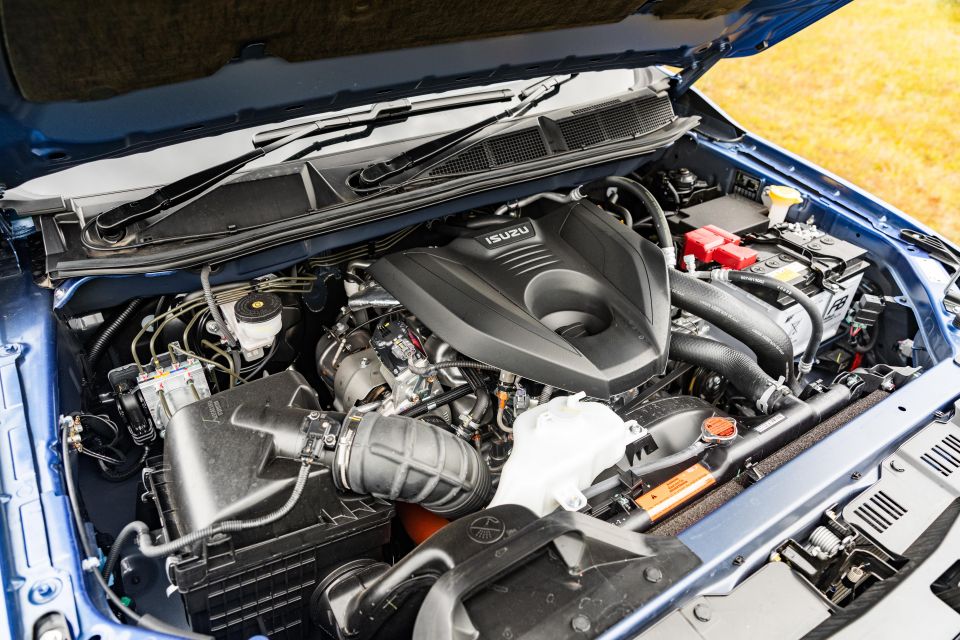
There are no driveline changes for 2023, to either the base 1.9-litre diesel or flagship 3.0-litre.
The LS-U+ runs the 3.0-litre, a four-cylinder turbo-diesel producing middling (by class standards) outputs of 140kW (at 3600rpm) and 450Nm (at 1600-2600rpm).
It’s mated to a six-speed Aisin automatic transmission and a part-time 4×4 system with low-range and a locking rear diff.
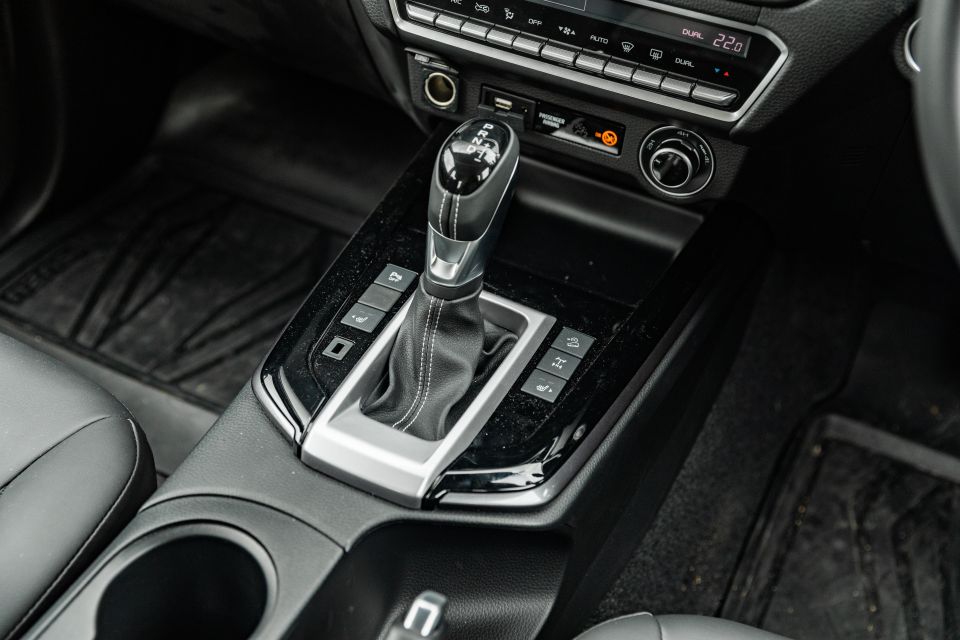
Fuel consumption under ADR testing is rated as 8.0 litres per 100km on the combined cycle, and the fuel tank stores 76L of diesel.
Braked-trailer towing capacity is 3500kg with a 350kg download (using Isuzu’s tow kit accessory).
While Isuzu Ute doesn’t publish official 0-100km/h acceleration times, our test vehicle (with very low mileage, barely run-in) returned a time of 11.3 seconds on our V-Box – one-tenth slower than a HiLux managed on the same surface in the same weather.

The fitment of a proximity key system that unlocks the car without needing to push a button is a good touch at this spec level, and the driving position as flagged earlier is excellent.
The 3.0-litre diesel doesn’t lead the segment when it comes to refinement, although it’s neither as coarse or clattery as the engines used in older-generation D-Maxes.
While its outputs (140kW and 450Nm) aren’t all that flash, it’s certainly punchier by the seat of the pants (and against a timer) than one rival with the same on-paper outputs: Nissan’s Navara.

Indeed, it’s generally a match for Toyota’s 150kW and 500Nm 2.8-litre HiLux, if not Ford’s benchmark new V6, when it comes to punch off the mark and rolling acceleration. It’s also still a fairly effortless tower, lugging a 2.5-tonne caravan without fanfare.
Even though I picked up our test vehicle with barely any mileage on the odometer, it felt run-in and was highly fuel efficient – over 500km of driving (both highways and suburban) it stubbornly refused to consume more than 8.2L/100km. Quite the teetotaller.
One function it does lack is full-time 4WD, instead running as a rear-wheel drive on tarmac and offering low- and high-range (50:50) 4×4 driving modes in the rough stuff.
It’s capable off the beaten path, though our test vehicle’s road-biased tyres aren’t as grippy as some, and the traction control system took a little while to activate on a lighter-duty trail test.
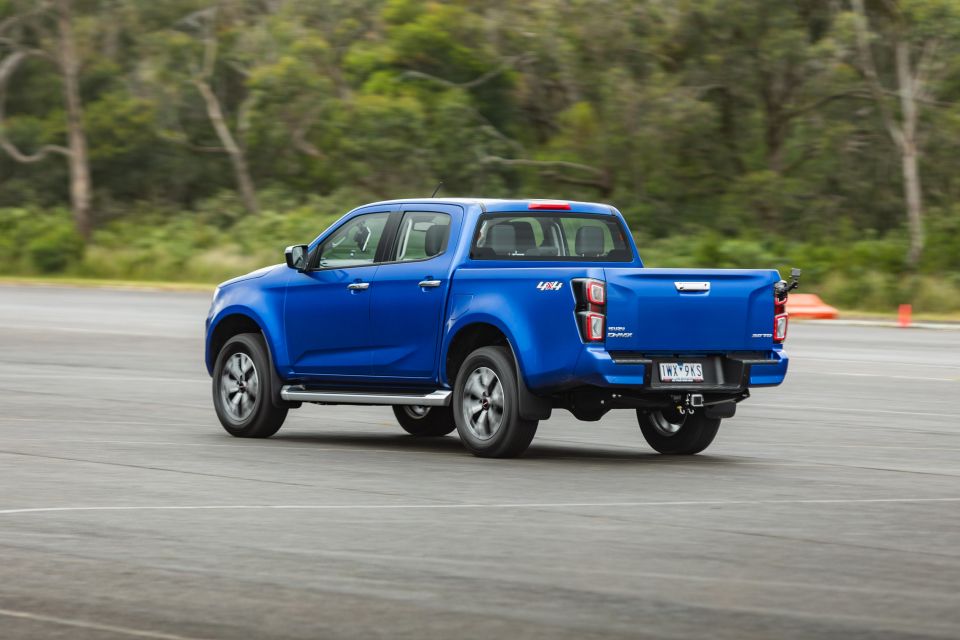
Where expert car reviews meet expert car buying – CarExpert gives you trusted advice, personalised service and real savings on your next new car.
Dynamically it’s up there for the class, ironing out road and gravel imperfections nicely, with good noise suppression, and a relatively settled tub thanks to its comfort-biased leaf springs.
Another great feature is its electric power steering, which is feather-light and makes the D-Max feel wieldy around town in daily driving.
The driver assist features for the most part worked well – meaning the adaptive cruise control and blind-spot monitoring. The lane-keeping aids are ok if not class-leading, though I tended to keep them off via a single button-push when outside the city limits with their well-painted lines.
In short then, the D-Max really isn’t a benchmark anywhere in particular, but anyone coming out of a previous-generation ute will find it a revelation, and it sits in the upper percentile of the segment when it comes to performance and comfort.
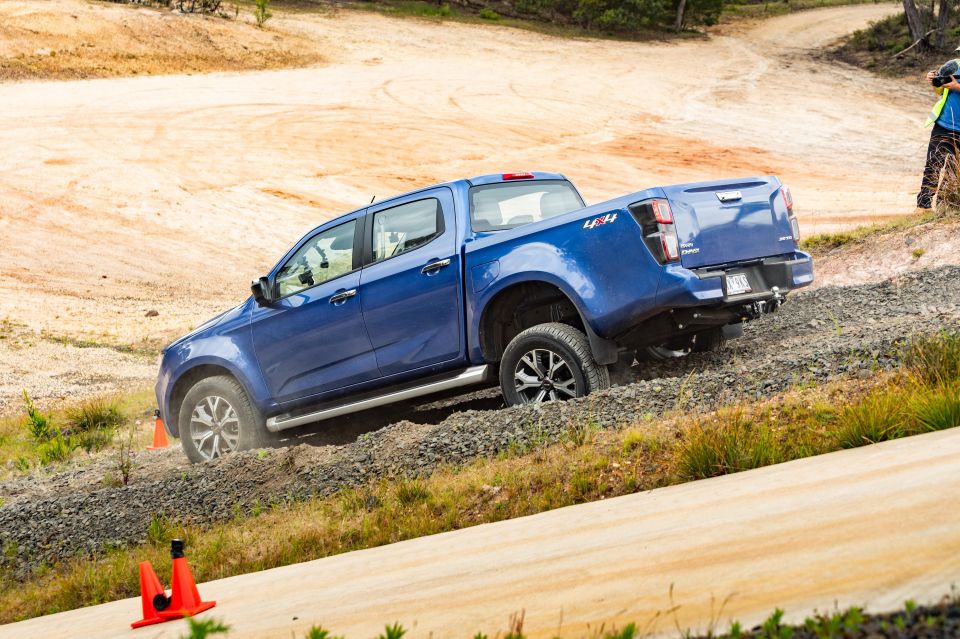
Tech Specs (D-Max LS-U+):
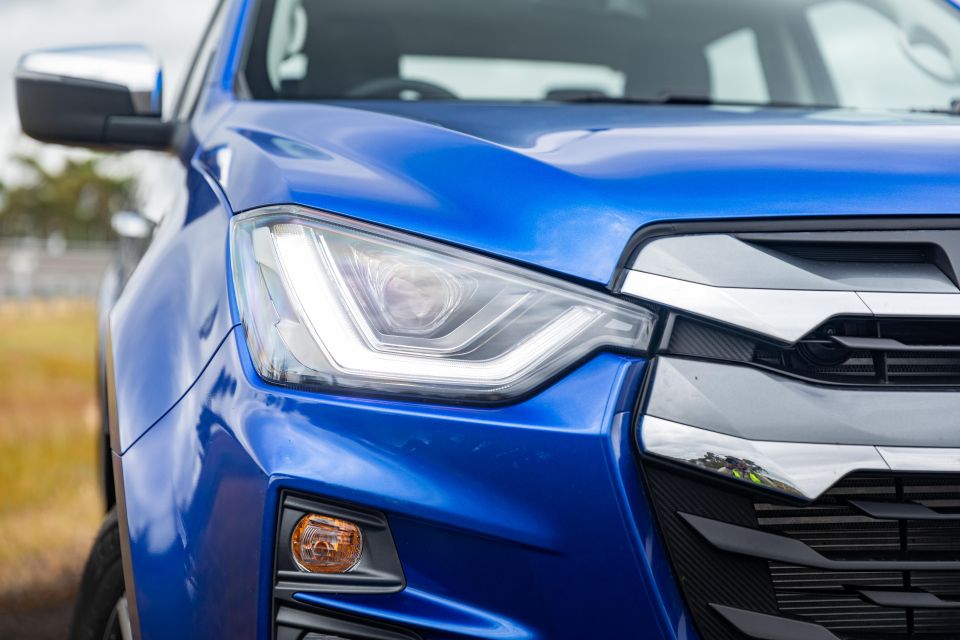



To give you a better idea of the full range, here’s the specification ‘walk’ across the grades.
Bear in mind this list applies to dual-cab models, with the two-door cab chassis grades having a few small differences.
D-Max SX key features:
D-Max LS-M adds:
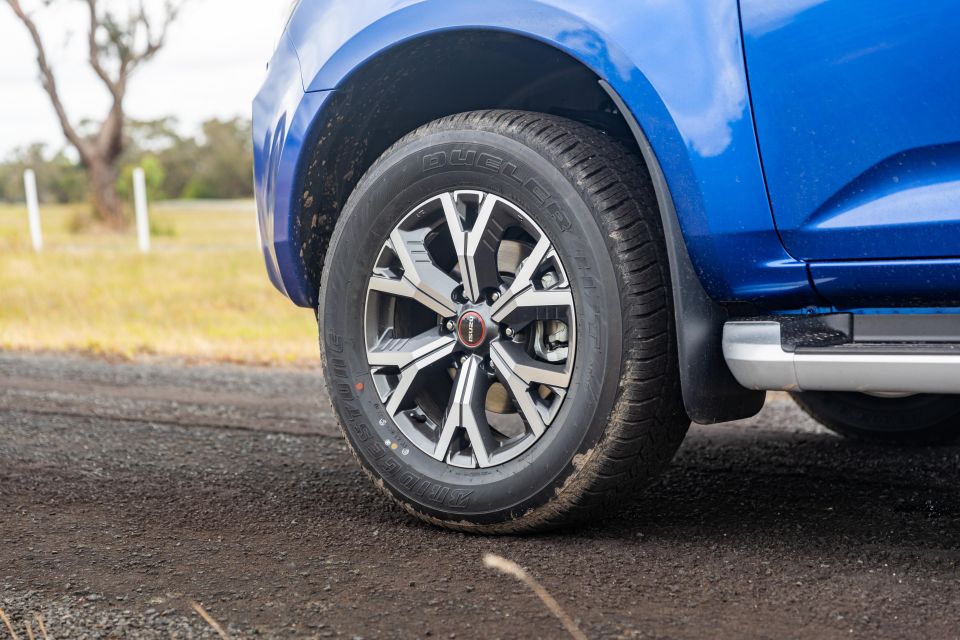
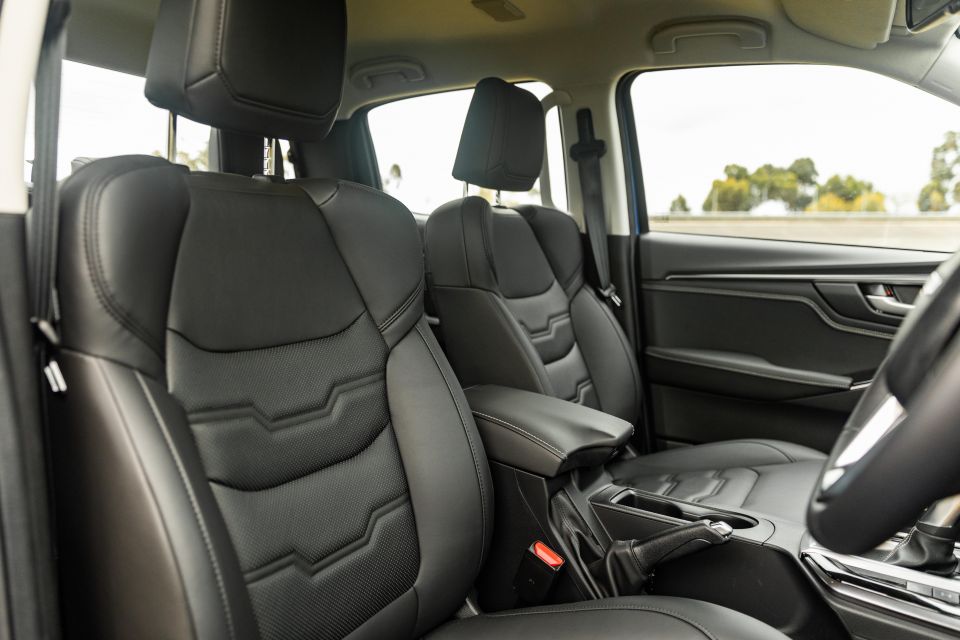
D-Max LS-U adds:
D-Max LS-U+ adds:
D-Max X-Terrain adds:

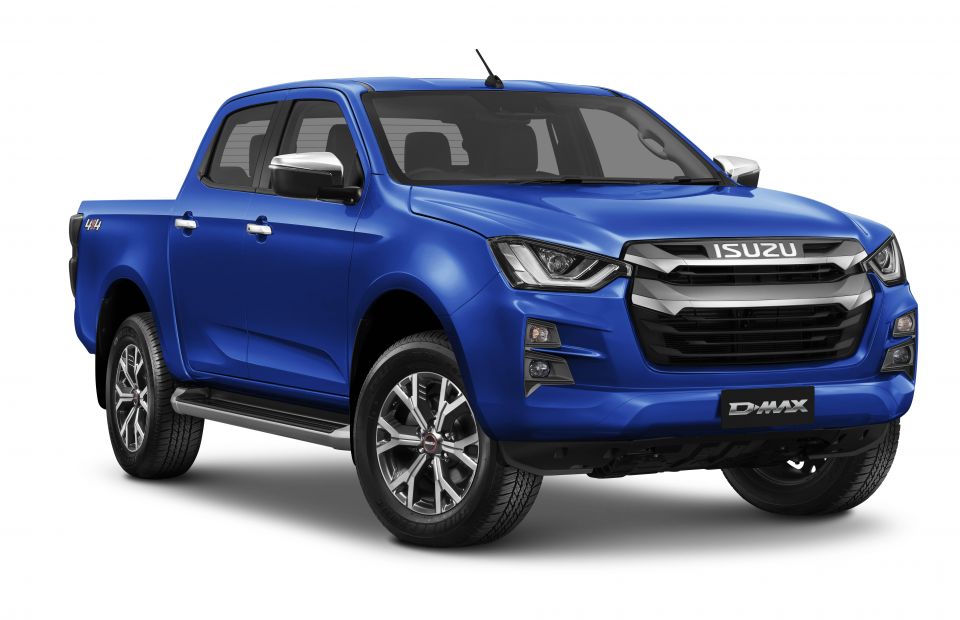
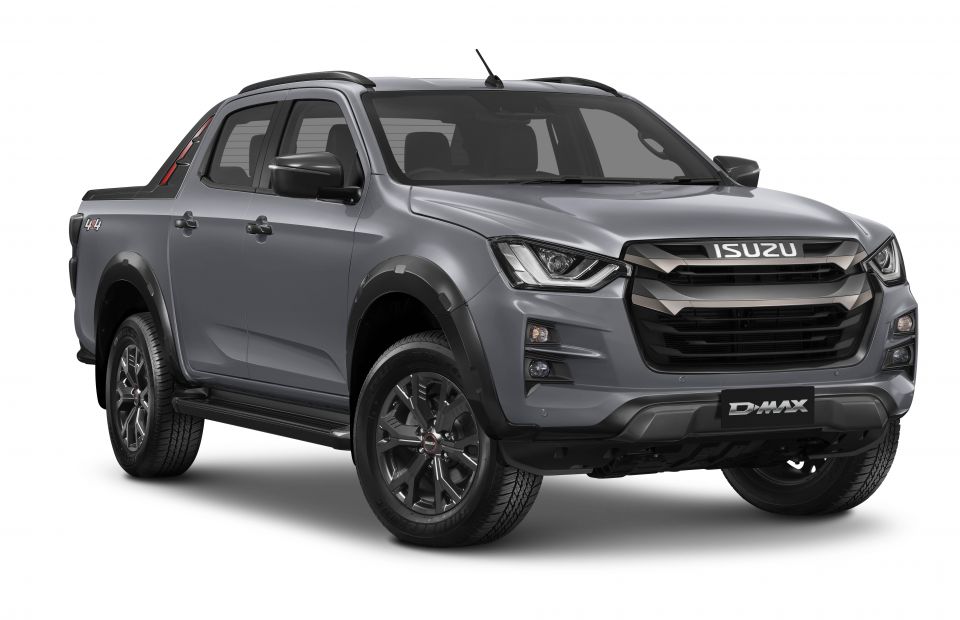

The 2023 D-Max range is available in the following colours, with all but Mineral White incurring a $650 premium:
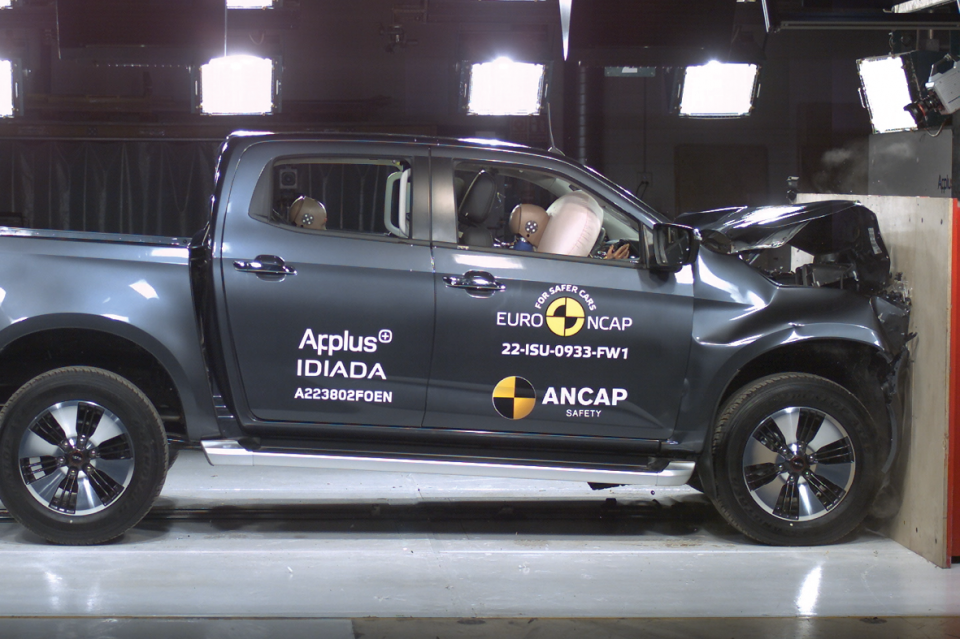
Australian crash testing authority ANCAP just re-tested the D-Max and MU-X SUV, again awarding them a five-star safety rating against outgoing 2020-2022 protocols.
Models built from July 2022 received a design change to the driver’s knee airbag and instrument panel.
Standard safety features include:
The D-Max now automatically disables Blind Spot Monitoring and Rear Cross Traffic Alert when a trailer is hitched and detected via the genuine trailer wiring harness.
This update comes just a year after Isuzu introduced the Lane Support System switch that allows the driver to switch lane keeping functions on or off, at the singular push of a button.

Isuzu Ute Australia provides a six-year, 150,000km warranty with seven years of roadside assist and capped-price servicing
2023 Isuzu D-Max service pricing:

Buy your new car without the stress. It's fast, simple and completely free.

Great service from Travis and team, second time I have used this business would not hesitate to recommend them to anyone
Craig C.
Purchased a Ford Ranger in Sunshine Coast, QLD
CarExpert helped Craig save $7,224 on his Ford Ranger, now let us save you on your next new car.
Get your BEST priceThe Isuzu D-Max is an honest workhorse, a work ute that gets on with the job without much flash and fanfare.
The LS-U+ brings to this mix some welcome interior plushness, and while aspects have been made to feel old by the knockout new Ranger, it still delivers in plenty of ways.
The interior is practical and has good ergonomics, the engine is very honest and punches above its weight, there’s the gamut of driver-assist aids, and its light electric steering and decent suspension tune makes it a comfortable daily.
It’s lost its mantle as class topper, but it still has plenty to offer, even if we’d like to see some easier-to-understand drive-away deals on offer.

Click the images for the full gallery
MORE: Everything Isuzu D-Max
Where expert car reviews meet expert car buying – CarExpert gives you trusted advice, personalised service and real savings on your next new car.


Max Davies
23 Days Ago


Josh Nevett
15 Days Ago
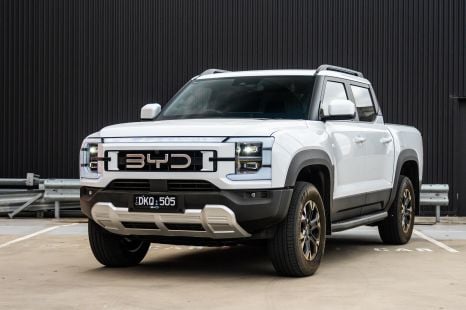

William Stopford
14 Days Ago


Max Davies
9 Days Ago
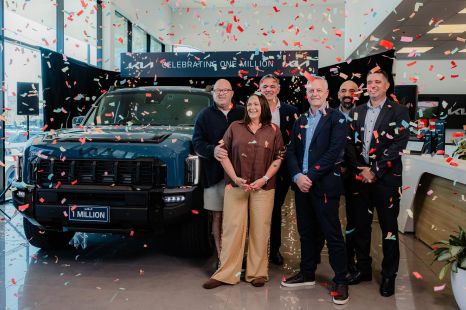

James Wong
8 Days Ago
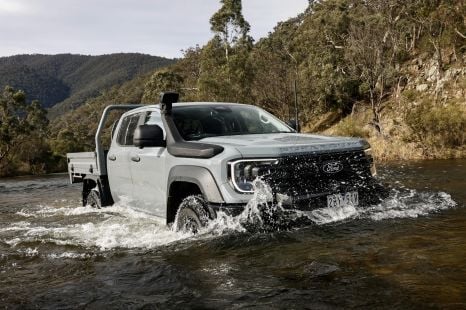

Max Davies
8 Days Ago